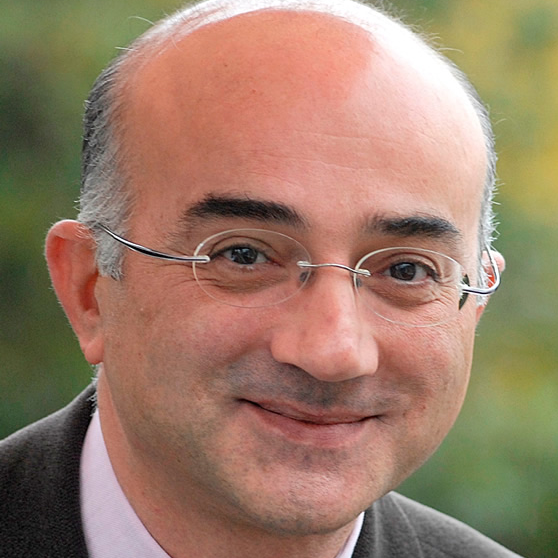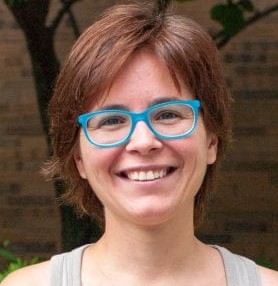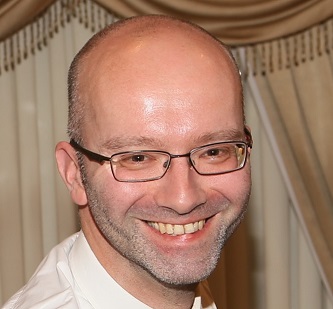Speakers and Chairs
Rachel Acuña-Narvaez, JD
Bluefield Project to Cure FTD
Rachel Acuña-Narvaez, JD, is the Project Manager, Biomarker Operations, at the Bluefield Project to Cure Frontotemporal Dementia (FTD), a nonprofit research organization dedicated to finding a treatment for FTD caused by mutations in the progranulin gene. She oversees the Neurofilament Surveillance Project, a precompetitive consortium that was created to explore potential biomarkers for FTD. Rachel has a decade of experience managing clinical studies and supporting FDA regulatory applications for medical product companies, both in-house and as a consultant.
The Neurofilament Surveillance Project (NSP): Lessons Learned during Year 1 of our Blood Biomarker Study in Familial Frontotemporal Lobar Degeneration
The Neurofilament Surveillance Project (NSP) is a precompetitive, prospective, longitudinal biomarker study. The study’s goal is to evaluate potential biomarkers in the blood of individuals who are members of families with inherited frontotemporal lobar degeneration (FTLD) caused by a mutation in either C9orf72, MAPT or GRN. Plasma from 335 study participants will be collected quarterly for three years at participants’ places of choosing using mobile certified nurses. NSP participants are recruited from an NIH-funded parent study called ALLFTD and receive comprehensive clinical assessments annually. The first potential plasma biomarker to be evaluated is the protein neurofilament light chain (NfL), which begins to rise approximately two years prior to the onset of clinical symptoms. Quarterly NfL measurements will be correlated with annual clinical assessments to provide greater temporal understanding of NfL changes during FTLD onset and progression. Further biomarker exploration will be determined by the NSP Steering Committee, which is comprised of representatives from pharma and biotech companies and foundations (including ADDF) funding this study. The NSP began study<br>preparations in May 2019, and enrollment opened in August 2020, after delays caused by the COVID-19 pandemic. A study update, including lessons learned from the study set-up process, will be shared.
Leyla Anderson, MD, PhD, D(ABMLI)
NeuroVision Imaging Inc.
Dr. Leyla Anderson is a board-certified medical laboratory immunologist with 10 years of experience in laboratory medicine and diagnostic testing. In her current role as VP of Biomarker Development at NeuroVision Imaging, she leads the planning and execution of all fluid-based biomarker endeavors. Prior to joining NeuroVision Imaging, Dr. Anderson was an Associate Director at Quest Diagnostics Clinical Trials Laboratory overseeing biomarker assay development, validation and implementation in Global Flow Cytometry, Molecular Biology and Anatomic Pathology departments as well as acting as Principal Investigator for several companion diagnostics studies spanning multiple disease areas such as oncology and neurodegenerative diseases.
Dr. Anderson obtained her PhD from Rosalind Franklin University of Medicine and Science and completed her postdoctoral studies at Yale University. She ran her own research laboratory and taught as a Lecturer at Oxford University.
E-poster: Validation and Commercialization of a Novel Blood-based, Ultra-multiplex Laboratory Developed Test (LDT) for the Prediction of Cerebral Amyloid Status before Clinical Onset of Dementia
Blood biomarker panels predicting cerebral amyloid status accurately are difficult to develop due to the complex nature of the matrix that can interfere with the quantification of the analytes, low concentrations of relevant biomarker proteins in blood, differences in protein profiles between brain and periphery, presence of several isoforms of each hallmark protein, different rates of biomarker clearance, and pre-analytical factors which can potentially result in an enrichment of certain isoforms that are not necessarily the biomarker with the highest clinical value.
The purpose of this project is to develop, validate and commercialize an ultra-multiplex assay to quantify multiple blood biomarkers in blood, including various Tau and phospho-Tau isoforms, GFAP, NfL, and amyloid beta peptides in addition to a proprietary assay for the prediction of brain amyloid. Availability of such an ultra-multiplex blood assay consisting of a hybrid approach (multiplex assay together with a novel, proprietary assay) will provide a vital clinical tool.
Following optimization of our current assays, we will validate the diagnostic accuracy of each assay (stand-alone, as well as combined) to detect brain amyloid in cognitively normal, mild cognitive impairment (MCI) and Alzheimer’s Disease subjects. Specifically, we will first optimize proprietary amyloid threshold assay in plasma using a 100 subject development sample set and finalize assay performance characterization and kit preparation for LDT validation. We will then investigate the benefit of assessing levels of various amyloid beta and tau isoforms, pTau181, pTau231, pTau217, GFAP and NfL in plasma in addition to the proprietary amyloid assay. Finally, we will perform analytical and clinical validations to finalize the LDT development for commercialization.
Rhoda Au, PhD
Boston University
Dr. Rhoda Au is Professor of Anatomy & Neurobiology, Neurology and Epidemiology at Boston University Schools of Medicine and Public and is a Senior Fellow at the Institute for Health Systems Innovation and Policy at the Questrom School of Business. She also serves as Director of Neuropsychology at the Framingham Heart Study. She has been developing multi-sensory brain health monitoring platform that is customizable, technology agnostic, and scalable. Her objectives include transitioning the platform from reliance on high friction technologies to low friction ones and developing broad based data sharing resources to accelerate data science/AI driven discovery of digital biomarkers. Her research seeks to move the primary focus of health technologies from precision AD medicine to a broader emphasis on precision brain health.
Alzheimer’s Disease Digital Biomarker Discovery: Framingham Cognitive Aging and Dementia Study
Early detection is considered a key breakthrough necessary to develop effective treatments for Alzheimer’s disease (AD) but many of the current methods for doing so are reliant on methods that are costly, time burdensome and difficult to scale. Further, there remains a significant and persistent health disparities gap that will be perpetuated if current practices continue to dominate research and clinical care.
Technology’s promise is not simply to do a better version of what we are already doing but rather to help overcome existing barriers that prevent achieving the scientific vision of comprehensiveness and inclusiveness that will fully capture the rich and complex heterogeneity of this insidious onset disease across the entire continuum from asymptomatic to disease severity sufficient to meet thresholds for clinical diagnosis.
We have recently launched extended digital phenotyping of Framingham Heart Study (FHS) participants from the Generation 2 and Omni Generation cohorts. This work includes longitudinal assessments done primarily using smartphone-based applications to collect cognitive performance measures every 3 months over a 3-year period. Because FHS participants come from a community-based sample, they are largely asymptomatic for AD. Given their average age of 76, they are currently at high age risk for AD symptom onset and the leveraging of a smartphone-based cognitive assessment strategy greatly enhances the potential to detect subtle cognitive changes even when traditional neuropsychological test assessments might deem them cognitively intact/normal.
Concurrently, a subset of 150 participants will undergo a PET amyloid scan and potentially a PET tau scan 12-14 months later. These same participants also have MRI scans done up to 20 years prior as well as concurrent with the PET scans. These A/T/N biomarkers can be used to identify and validate digital indices as digital cognitive biomarkers of AD.
Marta Barrachina, PhD
ADmit Therapeutics
Dr. Marta Barrachina is the founder and CEO of ADmit Therapeutics S.L., a spin off from the Bellvitge Biomedical Research Institute (IDIBELL, Barcelona, Spain). A principal investigator for fifteen years, she has built a solid scientific background in epigenetics of neurodegenerative diseases like Alzheimer’s disease and other dementias.
Dr. Barrachina holds six patents and had authored more than 35 scientific articles in the neuroscience field. She holds a PhD in Biochemistry from the University of Barcelona and an Executive MBA from the Ramon Llull University.
Mitoepigenetic Analysis in Blood Samples from MCI Patients to Identify their Progression to Alzheimer’s Disease
The “mitochondrial hypothesis” postulates that mitochondrial impairment is one of the firsts events that trigger Alzheimer’s disease (AD) pathogenesis. Interestingly, mitochondrial dysfunction has been described at systemic level, even before the appearance of the typical cerebral AD hallmarks.
Mitochondria is a cellular organelle with an own genome, which is called mitochondrial DNA (mtDNA). We reported that mtDNA methylation is altered in human postmortem brains from AD patients along disease progression with respect to age-matched control brains (Blanch et al., 2016, Am J Pathol, 186:385-97). Clinical proof of concepts have been obtained analyzing 204 MCI patients from two cohorts: ADmit and AIBL, collecting blood samples from the baseline visit. Additionally, 47 control cases (CDR=0) from AIBL cohort have been also analyzed. Several mitochondrial methylcytosines show a differential epigenetic profile among MCI patients progress to AD versus MCI patients non-progress to AD, which is not affected by gender or ApoE4 allele, or PET-Ab. In parallel, a pilot longitudinal intraindividual clinical study has been carried out with 10 cases from AIBL cohort, collecting blood samples in three time points: CDR=0, CDR=0,5 and CDR=>1; and 20 cases from ADmit cohort in two time points: CDR=0,5 and CDR=>1. Preliminary data shows that methylation in mitochondrial CpG and non-CpG sites is altered along disease progression.
In conclusion, a differential mitochondrial epigenetic profile is found in blood samples from MCI patients in the baseline visit, showing its potential as a tool to predict AD. Moreover, the longitudinal study has revealed the potential of these biomarkers as molecular probes to monitor disease progression in clinical trials.
Marta Blanch, PhD
ADmit Therapeutics
Dr. Marta Blanch holds a PhD in Biology by the University of Barcelona and is a specialist in genomics and next generation sequencing techniques, specialized in epigenetics in neurodegenerative diseases such as Alzheimer’s disease and Parkinson’s disease.
Dr. Blanch is an inventor of the patent associated to the ADmit proof of concept. Since 2018, she has served as a Senior R&D Manager in ADmit Therapeutics.
Mitoepigenetic Analysis in Blood Samples from MCI Patients to Identify their Progression to Alzheimer’s Disease
The “mitochondrial hypothesis” postulates that mitochondrial impairment is one of the firsts events that trigger Alzheimer’s disease (AD) pathogenesis. Interestingly, mitochondrial dysfunction has been described at systemic level, even before the appearance of the typical cerebral AD hallmarks.
Mitochondria is a cellular organelle with an own genome, which is called mitochondrial DNA (mtDNA). We reported that mtDNA methylation is altered in human postmortem brains from AD patients along disease progression with respect to age-matched control brains (Blanch et al., 2016, Am J Pathol, 186:385-97). Clinical proof of concepts have been obtained analyzing 204 MCI patients from two cohorts: ADmit and AIBL, collecting blood samples from the baseline visit. Additionally, 47 control cases (CDR=0) from AIBL cohort have been also analyzed. Several mitochondrial methylcytosines show a differential epigenetic profile among MCI patients progress to AD versus MCI patients non-progress to AD, which is not affected by gender or ApoE4 allele, or PET-Ab. In parallel, a pilot longitudinal intraindividual clinical study has been carried out with 10 cases from AIBL cohort, collecting blood samples in three time points: CDR=0, CDR=0,5 and CDR=>1; and 20 cases from ADmit cohort in two time points: CDR=0,5 and CDR=>1. Preliminary data shows that methylation in mitochondrial CpG and non-CpG sites is altered along disease progression.
In conclusion, a differential mitochondrial epigenetic profile is found in blood samples from MCI patients in the baseline visit, showing its potential as a tool to predict AD. Moreover, the longitudinal study has revealed the potential of these biomarkers as molecular probes to monitor disease progression in clinical trials.
Kaj Blennow, MD, PhD
Dr. Kaj Blennow obtained his medical degree (MD) in 1984, his PhD in Medical Science in 1990 and holds a Specialist Competence in both General Psychiatry and in Clinical Chemistry.
Dr. Blennow holds the Torsten Söderberg Professorship in Medicine and the Royal Swedish Academy of Sciences since 2015 and was appointed University Hospital Senior Physician in 2011. He is a professor and academic chair of the Clinical Neurochemistry department at the University of Gothenburg as well as Senior Consultant and Head of the Clinical Neurochemistry Lab at Sahlgrenska University Hospital.
The major research areas are cerebrospinal fluid biochemical markers, clinical proteomics, and the neurochemical pathogenesis of Alzheimer’s disease and other brain disorders.
Blennow has published more than 1200 original research papers and 150 review articles in peer-reviewed journals, and has an H-index of 133.
He has received a number of scientific awards, such as the 2019 Bengt Winblad Award, the 2013 International Foundation for Research in Alzheimer’s Disease (IFRAD) European Grand Prix in Research, Paris, the Henry Wisniewski Lifetime Achievement Award in Alzheimer’s Disease Research (2011), the ECNP Clinical Research Award (2010), the Alois Alzheimer Research Award (2001), and many more.
Tau and p-tau as Alzheimer Biomarkers - Assays, Methodological Aspects and Clinical Performance
Catherine Bornbaum, PhD, MBA
Dr. Catherine Bornbaum is a health scientist and business leader with more than a decade of experience leading large-scale health research operations. In her role as Head of Clinical Operations and Partnerships at RetiSpec, Dr. Bornbaum leads the planning, direction and evaluation of clinical research activities. She works collaboratively with key opinion leaders, investigators, and stakeholders to advance a rigorous and strategic research program in support of the commercialization of RetiSpec’s Alzheimer disease diagnostic technology.
In 2019, she was named one of the 100 Best & Brightest Executive MBAs globally by Poets & Quants.
RetiSpec’s Hyperspectral Imaging System: A Novel Approach to Retinal-based Detection of Alzheimer’s Disease
Background
RetiSpec is an artificial intelligence (AI) medical imaging company developing tools for the early detection of disease biomarkers in the eye. RetiSpec’s goal is to enable widespread early detection of Alzheimer’s disease with accessible and scalable screening. By harnessing hyperspectral imaging technology and proprietary AI, RetiSpec’s patented technology allows for the rapid, simple and cost-effective identification of Alzheimer’s biomarkers years before the emergence of clinical symptoms.
Methods
We utilized RetiSpec’s patented hyperspectral imaging technique to characterize biomarker status in a sample of participants in the pre-clinical and early symptomatic stages of Alzheimer’s disease. Diagnostic accuracy (as indicated by sensitivity, specificity, positive predictive value, negative predictive value, receiver operating characteristic [ROC] curve and area under the curve [AUC]) of RetiSpec’s technology to detect biomarker status in the pre-clinical and early symptomatic stages of Alzheimer’s disease was evaluated, as compared to amyloid beta (Aβ) PET or CSF assessment.
Results
Results indicate that RetiSpec’s hyperspectral retinal imaging technology is effective and highly accurate in detecting biomarkers associated with elevated cerebral Aβ levels in individuals in the pre-symptomatic and early symptomatic stages of Alzheimer’s disease.
Conclusions
RetiSpec’s hyperspectral retinal imaging technology has been utilized successfully in clinical research settings to accurately identify retinal biomarkers of Alzheimer’s disease in a simple, accessible, and scalable manner.
Niranjan Bose, PhD
Gates Ventures
Dr. Niranjan Bose is currently the Managing Director (Health & Life Sciences Strategy) at Gates Ventures LLC, where he serves as the Science Advisor to Mr. Bill Gates. Prior to joining Gates Ventures in August 2014, he was the Chief of Staff to the President of the Global Health Program at the Bill & Melinda Gates Foundation.
He was with the Gates Foundation from 2007 through 2014, which included a few years with their Enterics and Diarrheal Diseases (EDD) program strategy team, where he was responsible for managing a portfolio of investments, which included clinical development of enteric vaccines (rotavirus, cholera, enterotoxigenic E coli and shigella).
Prior to joining the Bill & Melinda Gates Foundation, he was with Strategic Decisions Group ( and SDG Life Sciences), where he was a Senior Consultant and assisted clients in the pharmaceutical and biotechnology industries with strategy development, company valuations, portfolio management frameworks, revenue forecasting, and competitive assessments.
Niranjan holds a PhD in biochemistry from Dartmouth College and an MS in biological sciences and BS in pharmaceutical sciences from Birla Institute of Technology and Science, Pilani, India. He also received the Business Bridge Diploma from the Tuck School of Business at Dartmouth.
Penny Dacks, PhD
AFTD
Dr. Penny Dacks became Senior Director of Scientific Initiatives for the Association for Frontotemporal Degeneration (AFTD) in September 2020. Previously, she worked at the American Epilepsy Society, overseeing mission-related programs in research, medical education, and clinical activities, and at the Alzheimer’s Drug Discovery Foundation, where she led development of CognitiveVitality.org and the Aging & Alzheimer’s Prevention Program to source and evaluate potential therapies.
She holds a PhD in neuroscience from the University of Arizona. As AFTD’s Senior Director of Scientific Initiatives, Dr. Dacks leads strategy for AFTD’s research programs and serves as President of the FTD Disorders Registry LLC.
Robert Dean, MD, PhD
Robert A. Dean Consulting, LLC
Dr. Robert Dean completed a toxicology/pharmacology doctorate and medical training at Indiana University, an internship and residency in anatomic and clinical pathology at Medical Center Hospital of Vermont and a medical fellowship in chemical pathology at the Mayo Clinic. He served as Director of Chemical Pathology at Indiana University School of Medicine providing laboratory services related to adult and pediatric clinical chemistry, specialty endocrinology, neonatal screening, clinical toxicology, metals and vital function laboratories. His academic research focused on drugs-of-abuse (alcohol, cocaine and heroin) metabolism and toxicity.
Dr. Dean subsequently served for 21 years as a clinical research pathologist and director Diagnostics & Experimental Medicine at Eli Lilly & Company. His industry research focused on biomarker discovery and development with application to translational research and diagnostics development. In this capacity, he broadly supported phase I through IV clinical drug development in the use of biomarkers in clinical safety assessment and to explore target engagement, target-related pharmacology, impact on pathophysiology and therapeutic tailoring. This work supported drug development for multiple cardiovascular and endocrine disorders, selected infectious and oncological diseases, and numerous pain, psychiatric and neurodegenerative disorders with special emphasis on Alzheimer’s Disease.
Dr. Dean currently provides clinical pathology-related consulting services through Robert A. Dean Consulting, LLC.
Chris Edgar, PhD
Cogstate
Dr. Chris Edgar has an extensive background in drug development and clinical trials methodology, and is an expert in the development, validation and application of clinical outcome assessments (COAs). He has held positions as scientific director at Cognitive Drug Research Ltd, senior clinical lead at Bracket, principal scientist at Roche, and is currently senior vice president clinical science at Cogstate.
Dr. Edgar has worked across all phases of clinical development and in multiple therapy areas, specializing in neuroscience, cognition and performance-based outcome assessments. Dr. Edgar has a particular interest in research topics concerning the application of cognitive assessments to clinical trials, establishing definitions for meaningful change, and related regulatory science issues.
Dr. Edgar has published more than 50 peer-reviewed articles. He recently presented on the topic of establishing the meaningfulness of treatment effects in Alzheimer’s disease drug development at the 2018 CTAD meeting and has been involved with several initiatives and publications related to clinical meaningfulness in the neurosciences. This includes working group membership of the: C-PATH cognition working group; ISPOR performance outcome (PerfO) assessments task force; AD PACE study design workstream; ECNP clinical outcomes working group; and ISCTM cognitive assessment in Alzheimer’s disease working group.
Smartphone-based Learning and Memory Assessment (Lila TM ): Beta Application Pilot Evaluation
Memory loss is one of the most common and disabling symptoms of Alzheimer’s disease (AD) and forgetting recently learned information results in an increased reliance on both aids and support from others, as well as impacting the well-being of people with the disease, their care partners, and family members. In this context, auditory verbal learning assessments such as RAVLT, CVLT, and HVLT are commonly employed. The International Shopping List test (ISLT) uses a similar paradigm to other verbal word list learning assessments but sets this within a realistic shopping list context. Key advantages of the ISLT are to provide a context supporting cultural adaptation, and to increase content validity and patient relevance.
Improvements to and the wide adoption of natural language processing (NLP) software has opened-up the possibility for self-administered tests of verbal learning. The development of a smartphone-based Learning and Memory Assessment (Lila TM ) is intended to create an app version of the ISLT which can be self-administered via virtual assistant and NLP technology. Lila TM retains the cross cultural utility and content validity of the ISLT and extend its use for applications included large-scale population screening and brain health awareness. Importantly, a user led approach to design is being followed to ensure acceptability and usability in older adults, who may also have some degree of cognitive loss.
Development of the Beta Lila TM app has supported the acceptability of the approach for participants and the accuracy of NLP for evaluation of learning and memory. Two studies have been designed and initiated to conduct pilot evaluation of Lila TM to collect data on user experience and understanding, via qualitative research including cognitive debriefing; and to gather initial data on metric properties.
An overview of the Beta Lila TM app will be presented, and the design of the pilot evaluation studies described.
Anka G. Ehrhardt, PhD
CHDI Management/CHDI Foundation
Dr. Anka G. Ehrhardt is a biophysicist with a doctorate degree in human physiology. Throughout her career, Dr. Ehrhardt combined scientific and technical expertise with strategic excellence and operational savvy to build and run laboratories and teams, design, implement, and run clinical studies, drive them to become Centers of Excellence and key partners, serving the discovery and development needs of large biopharmaceutical companies and patient-need-focused organizations.
Through her work at Merck & Co., Inc. and Bristol Myers Squibb, Dr. Ehrhardt encountered the key issues in biopharma research and development; and demonstrated the power and success of strategic planning and analysis. Based on observed needs, Dr. Ehrhardt built and lead teams of increasing size in developing and implementing strategies, contributing to the discovery and development of over 50 key leads and drugs. In 2017, Dr. Ehrhardt joined CHDI Management, Inc., where she is directing international clinical studies and clinical biomarker research.
Dr. Ehrhardt is currently on the board of different industry organizations, fostering innovation and collaboration between industry, academia, and government organizations.
Howard Fillit, MD
Alzheimer’s Drug Discovery Foundation
Dr. Howard Fillit is ADDF’s Founding Executive Director and Chief Science Officer. He is a geriatrician, neuroscientist, and innovative philanthropy executive, who has led the ADDF since its founding. Dr. Fillit has held faculty positions at The Rockefeller University, the SUNY-Stony Brook School of Medicine and the Cornell University School of Medicine. In 1987, he joined the Mount Sinai School of Medicine, where he is a clinical professor of geriatric medicine and palliative care, medicine and neuroscience. Dr. Fillit also maintains a limited private practice in consultative geriatric medicine with a focus on Alzheimer’s disease and related dementias.
He has authored or co-authored more than 300 publications and is the senior editor of Brocklehurst’s Textbook of Geriatric Medicine and Gerontology. Dr. Fillit is the recipient of many awards and honors including the Rita Hayworth Award from the Alzheimer’s Association. He is a fellow of the American Geriatrics Society, the American College of Physicians, the Gerontological Society of America and the New York Academy of Medicine. Dr. Fillit earned his bachelor of arts in neurobiology cum laude from Cornell University and his medical degree from the SUNY-Upstate Medical University.
Hüseyin Firat, MD, PhD
Amoneta
Dr. Hüseyin Firat is a pediatrician and practiced as an associate professor in Paris University hospitals. After his PhD of Immunology at Pasteur Institute, he was accredited as research director, responsible of the Immunology Laboratory at Généthon. In 2002, he joined then the Biomarker Department of Novartis Pharma, where he headed global omics data analysis sections worldwide, served as senior Biomarker Expert in International Project Teams and was member of Novartis Pharma Innovation Team, Basel. His research activities generated several patented discoveries, based on which three biotech companies have been created. In 2007, he has been accredited as University Professor in France, founded Firalis SA in 2008, Amoneta Diagnostics in 2014, and realized other M&A projects so far.
As Firalis Group’s CEO, he initiated and coordinated several international research consortia, received several national and European research grants as well as innovation and entrepreneurship prizes from several prestigious multinational associations such as “Entrepreneur of Future” from E&Y. As the CEO-CSO, he leads Firalis Group companies in collaboration with supervisory boards and expert consultants.
Non-coding RNA Based Biomarkers for the Diagnosis and Therapy of Alzheimer’s Disease
The recent approval of the AD medication, AduhelmTM, increases the hope for the development of other new disease-modifying drugs and biomarker based diagnostic tests to identify patients at early stages of the disease with preclinical, MCI-AD, and mild-AD. Currently many AD patients are still diagnosed too late or misdiagnosed. Existing diagnostic tests are either invasive (CSF testing) or expensive (PET scans). Firalis and its affiliate Amoneta Diagnostics, French SMEs specialized in non-coding RNAs for the diagnosis and therapy of neurodegenerative diseases, have developed a unique targeted sequencing (TS) tool (NeuroMICS®) for rapid and most sensitive quantification of these novel classes of brain enriched long non-coding RNA (lncRNA) biomarkers.
Over 104 000 probes have been designed to manufacture the NeuroMICS® TS tool. It has been fully validated as a future LDT test for the NGS-quantification of 7433 brain enriched neurodegenerative diseases’ associated lncRNAs. The tool exhibited about 70-fold more sensitivity compared to existing whole genome sequencing NGS technologies, allowing the quantification of over 6 000 lncRNAs in whole blood collected using PAXgene IVD tubes and 2 500 lncRNAs in plasma.
Plasma and whole blood samples have been collected from 1000 patients recruited in prospective clinical studies conducted by Amoneta-Firalis, within the frame of European Commission-funded ADKIT and ADDIA consortia projects (NCT03030586). Thanks to the discoveries derived from these research efforts, the company has built a highly innovative and rich pipeline of biomarkers that are currently under final clinical validation for the diagnosis of dementia. The identified dementia associated biomarkers are also being evaluated as future disease modifying therapeutic targets.
In this presentation, we will focus on the analytical and clinical performance of the NeuroMICS® innovative tool that will be available soon for all researchers and clinical investigators in the domain of brain disorders.
James Gallarda, PhD
Dr. James (Jim) Gallarda has a 20-year background in industry developing in vitro diagnostics at Abbott and Roche. He is experienced in blood screening infectious disease assay development, overseeing multiple teams developing immunodiagnostic & PCR systems for HIV-1, HIV-2, HCV, HBV and WNV.
Currently, Dr. Gallarda is Senior Program Officer at the Bill & Melinda Gates Foundation responsible for providing strategic and tactical guidance related to diagnostic efforts within the Foundation’s program strategy teams, with an emphasis in the tuberculosis and Ebola Dx initiatives, as well as in cross-cutting molecular technologies applicable to both developed and developing countries.
Prior to this, Dr. Gallarda was with Novartis Pharmaceuticals (in Cambridge MA) leading companion diagnostics program for assays used to assess the effectiveness of tyrosine kinase inhibitors for patients with CML.
Dr. Gallarda is also an independent consultant for various institutions having a focus in global health.
Danielle Graham PhD
Biogen
Dr. Danielle Graham
E-poster: Analytical Validation of Neurofilament Light and Phospho- Neurofilament Heavy Biomarkers for Patient Selection in Disease Modifying Clinical Trials for Pre- Symptomatic Familial Frontotemporal Degeneration
Frontotemporal degeneration encompasses a range of disorders that impact the frontal and temporal lobes of the brain. This neurodegenerative disease has a rapid disease progression, with high levels of axonal damage, making it an ideal indication to validate Nf assays. Further, there are currently no therapeutics to cure or prevent familial frontotemporal degeneration (f-FTD) and a major challenge to regulatory approval of therapeutics is the heterogeneity of symptoms and pathology within the spectrum of FTD. Recent studies in f-FTD support neurofilament light (NfL) or phosphorylated neurofilament heavy (pNfH) as a risk/susceptibility marker to predict conversion from asymptomatic to symptomatic status in gene mutation carriers.
This project will evaluate next generation neurofilament assays to determine whether peripheral Nf measures are sufficiently robust and reproducible to inform on the selection of patients in a clinical trial. If qualified for use by the FDA, this could be a tool to accelerate novel development of disease-modifying therapeutics to prevent of delay the onset of f-FTD symptoms.

SESSION III, Oct 13
11:25 US ET
e-Poster Co-presenter (with Drs. Rhoda Au and Lampros Kourtis)
Ihab Hajjar, MD
Emory University
Dr. Ihab Hajjar is an Internist, geriatrician, and a dementia specialist in Atlanta, GA. He is an Associate Professor of Medicine and Neurology at Emory University. He received his medical degree from American University of Beirut Faculty of Medicine and has been in practice for more than 20 years. He is experienced in cognitive disorders, behavioral neurology/neuropsychiatry, hypertension, cerebrovascular disease, advanced neuroimaging, and aging.
E-poster: Speech & Language Consortium

Wesley Horton, MS
Foundation for the National Institutes of Health
Wesley Horton is a Scientific Project Manager for Neuroscience Research Partnerships at the Foundation for the National Institutes of Health. He manages the Biomarker Consortium Neuroscience Steering Committee (BC NSC), its various working groups, and a portfolio of projects, including the Plasma Aβ Project.
Prior to joining the FNIH, Mr. Horton worked for Georgetown University for four years as a Clinical Trial Manager for interventional Alzheimer’s disease studies and developed clinical research programs in Stroke, Neurosurgery, and Interventional Radiology. He also spent time working with the Henry M. Jackson Foundation managing a portfolio of international multi-center clinical trials to understand the natural history of HIV and HIV Associated Neurocognitive Disorder.
Mr. Horton received his Master’s in Clinical and Translational Research from Georgetown University with a focus on mechanistic and biomedical research.
Plasma Aβ and pTau Biomarkers As Drug Development Tools to Define Clinical and Pathological Trajectories in AD
The National Institute on Aging and the Alzheimer’s Association framework for classifying Alzheimer’s disease (AD) utilizes measures of pathology for amyloid, tau, and neurodegeneration (ATN), that can identify participants for clinical trials. Currently, amyloid pathology is determined by costly PET or invasive CSF measurements. When applied to participant selection, these measures are associated with high screen failure rates and contribute to the high costs and long duration of recruitment of AD clinical trials. This study evaluated six plasma assays (three liquid chromatography–mass spectrometry (LC-MS/MS) assays and three immunoassays) for Aβ42 and Aβ40 on their ability to predict amyloid PET positivity compared to age and APOE genotype alone. Plasma samples with corresponding amyloid PET data within 3 months were selected from Alzheimer's Disease Neuroimaging Initiative (ADNI) representing participants that are cognitively normal, mild cognitive impairment, and AD.
The project compares each assay’s ROC improvement over a reference model of known drivers of amyloid deposition, age and APOE genotype. Three of the assays significantly improved the ROCs over the reference model when you included age and APOE genotype and one assay performed better than the reference model on Aβ 42/40 ratio alone. Pairwise correlations of the Aβ 42/40 ratio for each assay were low to moderate, but moderate to high for Aβ42 and Aβ40 separately.
The project will be expanding into another cohort from ADNI to define the relationship of these plasma measures to pathological and clinical trajectories in patients, a necessary step to inform on their use as patient selection tools in clinical trials and eventually as a diagnostic in the clinic. Additionally, the project will include a feasibility with participants in study 1 with pathologically relevant markers like pTau181, -217, and -231 to test whether even better improvements in predictive performance are possible.
E-poster: Analytical Validation of Neurofilament Light and Phospho- Neurofilament Heavy Biomarkers for Patient Selection in Disease Modifying Clinical Trials for Pre- Symptomatic Familial Frontotemporal Degeneration
Frontotemporal degeneration encompasses a range of disorders that impact the frontal and temporal lobes of the brain. This neurodegenerative disease has a rapid disease progression, with high levels of axonal damage, making it an ideal indication to validate Nf assays. Further, there are currently no therapeutics to cure or prevent familial frontotemporal degeneration (f-FTD) and a major challenge to regulatory approval of therapeutics is the heterogeneity of symptoms and pathology within the spectrum of FTD. Recent studies in f-FTD support neurofilament light (NfL) or phosphorylated neurofilament heavy (pNfH) as a risk/susceptibility marker to predict conversion from asymptomatic to symptomatic status in gene mutation carriers.
This project will evaluate next generation neurofilament assays to determine whether peripheral Nf measures are sufficiently robust and reproducible to inform on the selection of patients in a clinical trial. If qualified for use by the FDA, this could be a tool to accelerate novel development of disease-modifying therapeutics to prevent of delay the onset of f-FTD symptoms.
Laura Ibanez, PhD
Washington University
Dr. Laura Ibanez graduated from the Autonomous University of Barcelona in with a B.S. in Biotechnology and another in Biochemistry with a high grade point average that allowed her to obtain a grad-student fellowship from the Government.
Dr. Ibanez joined the laboratory of Dr. Dalmau where she initiated a project to study the relationship between genetics of inflammatory pathways and the HIV-associated subclinical atherosclerosis. She then joined the laboratory of Dr. Cruchaga at Washington University in Saint Louis to lead the analyses of an international multi-center genetic study, the GENISIS (Genetics of Early Neurological Istability after Ischemic Stroke) Study. She also led the Parkinson’s disease project in the same lab.
Dr. Ibanez is now a junior faculty at Washington University. Her research interests are focused on finding blood-based molecular biomarkers to diagnose and follow-up neurodegenerative diseases.
Diana Kerwin, MD
GAP Innovations, PBC
Dr. Diana Kerwin is Founder and President of Kerwin Medical Center, a practice that focuses on finding a cure for Alzheimer’s and other related dementia diseases. Dr. Kerwin has almost twenty (20) years experience in Alzheimer’s and dementia research. Dr. Kerwin is Board Certified in Internal Medicine and Geriatrics in Texas, Illinois, California, Florida and Wisconsin.
Prior to forming her memory care practice in Dallas, she was Assistant Professor of Medicine-Geriatrics at Northwestern University in Chicago and a faculty member of the world recognized Northwestern University Cognitive Neurology and Alzheimer’s Disease Center (CNADC).
Her award-winning research on the relationship of obesity and memory function in women has been featured in TIME Magazine, the BBC, The Boston Globe, and on local and national news programs. Dr. Kerwin is a frequent lecturer and guest host on television programs related to Alzheimer’s and dementia.
Dr. Kerwin is in her 7th year as a member of the National Board of Directors for the Alzheimer’s Association and was recently voted to serve as Vice-Chairperson of the Board of Directors, she is an Adjunct Assistant Professor in the Department of Neurology and Neuro-Therapeutics at the University of Texas Southwestern Medical Center in Dallas and has been the academic partner on several community initiatives to improve the care of senior adults with dementia in underserved areas and continues to focus on this aspect of improving access to care.
Dr. Kerwin is the principal investigator for several National Institute for Health funded studies on the prevention of Alzheimer’s disease, as well as on collaborative studies for patients with frontotemporal lobe dementia syndromes. She has served as principal investigator on phase 1, 2, and 3 clinical trials for the development of therapeutics in Alzheimer’s and other dementias such as progressive supranuclear palsy and multiple system atrophy.
Dr. Kerwin’s vision for memory care is to utilize her expertise in memory disorders to deliver quality care to her patients, excellence in research, and support to the community of individuals impacted by dementia and Alzheimer’s disease.
E-poster: Validation of Alzheimer’s Disease Biomarkers and Methods of Recruitment of a Racially Diverse Study Population
Diana Kerwin1; John Dwyer2; Sarah Hollingshead2, Katy Smith2
1 Kerwin Medical Center, Dallas, TX, USA.
2 Global Alzheimer’s Platform Foundation, Washington, DC, USA.
Background
Determination of Alzheimer’s disease (AD) pathology in clinical trials relies on cerebrospinal fluid (CSF) and/or brain imaging techniques, including Positron Emission Tomography (PET). These procedures take time to analyze, are expensive, and result in high-cost screen fails. The accuracy of plasma P-tau181 compared with plasma P-tau217 or P-tau231 in diagnosing AD has not been investigated in a single trial. Additionally, biomarkers have not been adequately tested in racially and ethnically diverse populations. The Global Alzheimer’s Platform Foundation, in partnership with Diana Kerwin, MD, as the Principal Investigator, has initiated a biomarker trial called Bio-Hermes, aimed at validating blood-based biomarkers in diverse populations with AD.
Methods
Bio-Hermes will determine blood-based biomarker levels of amyloid-β (Aβ) 42/40, P-tau181/217/231, and neurofilament light (NfL) compared with centrally read and quantitated amyloid PET scans. Furthermore, GAP is looking to determine if there is a meaningful relationship between digital biomarkers and cognitive assessments to better understand their ability to predict amyloid positivity. Bio-Hermes will also explore if racial differences related to specificity and sensitivity of blood-based biomarkers exist by enrolling a minimum of 200 participants (20% of total enrollment) who self-identify as an underrepresented minority (URM), specifically Black/African American or Hispanic/Latinx.
Enrollment is targeted to close within approximately 12 months of First Patient In (FPI). Effective recruitment of URM will be key to success. GAP will implement a “hub and spoke” model in each community which includes a multi-faceted approach to recruitment focused on awareness, knowledge and increasing access for minorities. This will be achieved through community mapping, focused and intentional community engagement, connecting with PCPs serving URMs, targeted earned and digital media, and cultural competence training for site staff.
Results and Conclusion
Bio-Hermes was IRB approved (Protocol Version 2.0) April 1, 2021 and FPI was April 21, 2021.
As of August 1, 2021, recruitment data was as follows:
Participants screened: 207
Participants Enrolled: 175
% Minorities: 12%
SF Rate: 15%
The Bio-Hermes trial will not close until 20% of enrollments are under-represented minorities. Broad access to deidentified data will be made available after the trial’s conclusion.
Lampros Kourtis, PhD
Circadic.io
Dr. Lampros Kourtis is a biomedical engineer that specializes in digital biomarkers. His main focus is passive signal collection and analysis from mobile and wearable devices, and applications in the chronic disease space. He has been working with ADDF, creating an AD harmonized, sharable speech sample repository that can be used by researchers to create diagnostic and monitoring applications. Currently, he is a cofounder and managing director at Circadic, a Boston based digital biomarker discovery startup. He is also a partner at Velocity.Partners, a seed stage VC firm investing in healthcare solutions.
Previously, Dr Kourtis has founded a couple of biomaterials VC backed startups leading them from concept to clinical application, Biomimedica (So San Francisco, CA) and Hyalex Orthopaedics (Lexington, MA). He also worked for Eli Lilly and Evidation Health. Moreover, he is an adjunct professor at Tufts School of Medicine (CTSI). He holds a PhD from Stanford University and a BEng in ME from Aristoteles University. He holds over 25 patents on biomaterials, medical devices, digital biomarkers and IoT solutions.
Zoe Kourtzi, PhD
University of Cambridge
Dr. Zoe Kourtzis Professor of Computational Cognitive Neuroscience at the University of Cambridge. Her research aims to develop predictive models of neurodegenerative disease and mental health with translational impact in early diagnosis and personalized interventions.
Dr. Kourtzi received her PhD from Rutgers University and was postdoctoral fellow at MIT and Harvard. She was a Senior Research Scientist at the Max Planck Institute for Biological Cybernetics and then a Chair in Brain Imaging at the University of Birmingham, before moving to the University of Cambridge in 2013. She is a Royal Society Industry Fellow, Fellow and Cambridge University Lead at the Alan Turing Institute, and the Scientific Director for Alzheimer’s Research UK Initiative on Early Detection of Neurodegenerative Diseases.
E-poster: Early Detection of Neurodegenerative Diseases Initiative
The Early Detection of Neurodegenerative diseases (EDoN) initiative brings together expertise in digital technology, data science and neurodegeneration to develop a digital device that enables the detection of specific dementia-causing diseases 10-15 years before dementia symptoms become noticeable. As part of EDoN, data such as sleep patterns, physical activity levels, smartphone interactions, cognitive function and mood will be collected in participants from observational research studies using digital technologies, like wearable devices and smartphone applications. Clinical measures from these participants, such as brain scans, will be used to train machine learning models to detect ‘fingerprint’ patterns in the digital data that are characteristic of the earliest stages of specific dementia-causing diseases. Our integrated EDoN toolkit will support the early detection of specific dementia-causing diseases in a cost-effective, low-burden manner on a population-wide scale, with translational impact in digital health checks and drug discovery.
Russell Lebovitz, MD, PhD
Amprion
Dr. Russell Lebovitz worked for 15 years as a successful senior scientist and research physician in a variety of academic settings before transitioning to a second career focused on financial, operational and executive management of emerging technology companies. Between 1997 and 2003, he managed global projects in operations, marketing and finance for a number of Fortune 100 technology including Royal Dutch Shell, Enron, ABB, SprintNextel, AT&T Wireless, Johnson & Johnson, Merck, Compaq/HP, King Pharmaceuticals, and JPMorganChase. Since 2003, Russ has been a serial entrepreneur and active investor in life sciences projects involving protein diagnostics, imaging technology & image analysis, machine learning, drug development and medical devices.
Since 2005 Dr. Lebovitz has served as a life sciences venture partner and entrepreneur in residence with several different early stage funds in Silicon Valley and Southern California. Through these relationships, he has served as CEO of diagnostics, therapeutics and consumer healthcare companies including CSixty, Marval Biosciences, Skincential Sciences and Amprion. Dr. Lebovitz currently serves as CEO and Co-Founder of Amprion, where he oversees an extremely talented team focused on accurate and early diagnosis of Alzheimer’s, Parkinson’s and related neurodegenerative diseases. He has also served on the faculty of Baylor College of Medicine in Houston and The Fox Chase Cancer Center in Philadelphia, and currently serves on the Board of Directors for Skincential Sciences, Amprion, Ambra Biosciences and FP Complete and as a Venture Advisor for Bootstrap Labs.
Advancing Differential Diagnosis of Dementias by Direct Detection of Prion Like Particles
There is general agreement that progression and spread of neurodegenerative diseases involves intercellular transmission and replication of Prion-Like aggregates of Amyloid forming proteins including Abeta, Tau and Synuclein. These Prion-Like aggregates are soluble and distinct from larger aggregates defined pathologically as plaque, neurofibrillary tangles and Lewy Bodies. Amprion has pioneered the development of seed amplification technologies to directly detect these particles in tissues and biological fluids at scale. The technology is most fully realized for synuclein aggregates, for which Amprion has received both FDA Breakthrough Designation as well as set up a CLIA to use validated versions of this technology for diagnosis in patients suspected for AD, LBD and PD. The current assay is optimized for CSF, but tests for other matrices are in active development.

SESSION I, Oct 11
13:10 US ET
e-Poster Presenter
Cecilia Lee, MD
University of Washington
Dr. Cecilia Lee is an Associate Professor and Klorfine Family Endowed Chair of Ophthalmology at the University of Washington. Dr. Lee is a clinician-scientist who specializes in medical retina and serves as the Director of Clinical Research at the Department of Ophthalmology.
Dr. Lee completed her residency training at Emory University, Atlanta GA. She then completed a uveitis fellowship at University of Washington in St. Louis, St. Louis, MO and a medical retina fellowship at Moorfields Eye Hospital in London UK. After joining the faculty at University of Washington, she obtained a Master of Science in Epidemiology at University of Washington School of Public Health.
Dr. Lee received NIH/NEI K23 Career Development Award and has several NIH funded grants.
She serves as the principal investigator of Eye Adult Changes in Thought (ACT) study. Her research interests include Big Data, ophthalmic imaging, retinal biomarkers of Alzheimer’s disease, and clinical epidemiology. Dr. Lee is extensively published. She aspires to improve our understanding of the connection between the aging eyes and the aging brains.
E-poster: Identifying an Ophthalmic Combinatorial Biomarker of Early Alzheimer’s Disease Using Deep Learning
The eye and the brain share an embryologic connection making the retina a potential noninvasive source of information about the aging brain. Multiple retinal structural and functional changes have been associated with mild cognitive impairment (MCI) and Alzheimer’s disease (AD), though mostly in studies with small sample sizes and with inconsistent findings. In addition, most potential biomarkers have not been compared using advanced analytic methods.
We aim to perform a comprehensive evaluation of the currently-available state of the art visual function tests and imaging modalities in a well-characterized cohort using deep learning. Our goal is to identify the minimal set of biomarkers that is diagnostic of early AD. We hypothesize that an ophthalmic combinatorial biomarker, rather than a single biomarker, will be a better predictor of early AD. A total of 150 participants will be recruited from the Clinical Core of the Alzheimer’s Disease Research Center at the University of Washington (UW ADRC). Clinical Core participants undergo extensive clinical and cognitive testing every year and represent a cognitive status range from normal to early AD. The following additional visual function and ophthalmic assessments will be performed: low-luminance visual acuity and contrast sensitivity testing, pupillary response via multi chromatic pupillometry, retinal structure and vasculature with simultaneous spectral domain optical coherence tomography and optical coherence tomography angiography, evaluation of mitochondrial dysfunction via flavoprotein fluorescence testing, and hyperspectral imaging for amyloid detection in the retina. The resulting retinal structural measurements, vascular parameters, and functional and metabolic variables will be analyzed using deep learning models to find the features that are most correlative with cognition. Our hope is to identify novel biomarkers that reflect early functional alterations in MCI and AD, and therefore characterize a combinatorial AD biomarker that can be assessed quickly and noninvasively in an outpatient setting, enabling future AD research.
Nicklas Linz, PhD
ki elements
Nicklas Linz is the founder and CEO at ki elements. He is an AI researcher and computer scientist trained at the Saarland University and German Research Center for Artificial Intelligence (DFKI).
His major research areas are machine learning methods and natural language processing for early detection of dementia. Nicklas and his collaborators have contributed to 32 conference and journal publications. Their dementia screening technology received the “Best Paper Award” at the Pervasive Health Conference (2018) and ICDM (IEEE international conference on data mining series).
ki elements is based in Saarbrücken, Germany, using speech and language to assess neurological and psychiatric pathologies and developing clinical speech biomarkers as their vision. Their innovative technology is based on research collaboration with world-known pharmaceuticals, clinical and academic partners.
E-poster: PROSPECT-AD--Population-based scReening Over SPEech for Clinical Trials in AD
Alexandra König1,2,3, Nicklas Linz3, Cheng-Hua Bai3, Craig Ritchie4, Stefan Teipel5, Bruno Dubois6, Stephanie Bombois6, Marc Teichmann6, Philippe Robert2, Sebastian Palmqvist7, Oskar Hansson7
1 Institut national de recherche en informatique et en automatique (INRIA). Stars Team. Sophia Antipolis. Valbonne. France.
2 Cobtek (Cognition-Behaviour-Technology) Lab, FRIS-University Côte d’Azur, Nice, France
3 ki:elements, Saarbrücken, Germany.
4 Edinburgh Dementia Prevention, University of Edinburgh, Edinburgh, UK.
5 German Center for Neurodegenerative Diseases (DZNE), Rostock, Germany; Department
of Psychosomatic and Psychotherapeutic Medicine, University of Rostock, Rostock, Germany.
6 Hôpital Universitaire Pitié Salpêtrière, Institut de la Mémoire et de la Maladie d’Alzheimer – IM2A, Paris, France.
7 Clinical Memory Research Unit, Department of Clinical Sciences, Malmö, Lund University, Lund, Sweden.
Background: The current “new era of Alzheimer’s disease (AD) clinical trials” suggests a shift to very early identification of people at risk. As language and speech impairments are an early feature of neurodegenerative dementias, we conceived a pre-screening battery consisting of speech-based neurocognitive tests to examine how digital markers of language and speech may serve the screening of at-risk populations that are at a prodromal
stage of AD.
Methods: PROSPECT-AD collaborates with ongoing cohorts such as EPAD (UK), DELCODE (Germany), BioFINDER (Sweden) or INSIGHT-preAD II (France) by adding the collection of speech data to existing protocols or as follow-up assessments over the telephone.
Participants: n = 1200, aged ≥ 50, across 4 sites, with a clinical dementia rating scale (CDR) score of 0 or 0.5. Participants at preclinical stages are mainly recruited from existing parent cohorts across Europe to form a ‘probability-spectrum’ population covering the entire continuum of anticipated likelihood for Alzheimer’s dementia development. This characterization of cognitive, biomarker and risk factor (genetic and environmental) status of each research participants over time combined with audio recordings of speech samples will provide the necessary well-phenotyped population for developing predictive longitudinal models for Alzheimer’s disease covering the entire disease course and concurrently create a pool of highly characterized individuals for the validation analysis.
The study protocol (ca. 18 months), including the following tests: Word List, Story Retelling [Learning & Memory], Digit Span, Phonemic Verbal Fluency, Semantic Verbal Fluency [Executive Functions], Spontaneous free speech [Psychological and/or behavioral symptoms]. The spoken features extracted will be compared to neuropsychological evaluations, genetic profiles, biomarkers, neuroimaging, and family history.
Models will be trained to connect speech variables and preclinical biomarkers (Amyloid, pTau). Advanced machine learning and different computational techniques will be employed to identify the most significant speech markers that could represent an early indicator for a pre-screening scenario.
Asael Lubotzy, MD, PhD
Hebrew University
Dr. Asael Lubotzky, a physician and molecular biologist, obtained his medical degree (MD) from the Hebrew University Hadassah Medical School in Jerusalem. He specialized in pediatrics at the Shaare Zedek Medical Center in Jerusalem and continued to a Pediatric Neurology Fellowship.
In parallel, he joined the lab of Prof. Haim Cedar, who is recognized as a pioneer and international leader in the field of epigenetics, especially DNA methylation. In his laboratory at the Hebrew University’s Department of Developmental Biology and Cancer Research, he explored developmental aspects and molecular mechanisms of postnatal demethylation patterns.
Lubotzky moved on to a PhD in epigenetics in Prof. Yuval Dor’s and Prof Ruth Shemer’s laboratory, exploring methylation patterns of circulating cell free DNA, focusing on cancer and brain biomarkers. Lubotzky was recognized for his studies on circulating cfDNA as cancer diagnostic markers, received the Israel Cancer Research Fund (ICRF) cancer grant and in 2019 was awarded the James Sivartsen Prize in Cancer Research by the Hebrew University for his innovative work in the field of cancer research. In 2020 his research team received a grant from the Alzheimer’s Drug Discovery Foundation (ADDF) towards their research on early diagnosis of Alzheimer’s disease based on blood tests. In 2021 he received the Joint Award of the National Institute of Psychobiology in Israel (NIPI) and the Israeli Society of Biological Psychiatry.
Lubotzky is the author of two non-scientific books. In 2017 he was awarded the Leitersdorf Prize for the Arts.
A Liquid Biopsy for Alzheimer’s Disease
The Hebrew University Medical School, Jerusalem, Israel
Fragments of circulating cell-free DNA (cfDNA) are released from dying cells, and can inform on tissue turnover and cell death. We have established a cocktail of DNA methylation markers that are uniquely unmethylated in human neurons, oligodendrocytes and astrocytes, and have used these as biomarkers for detection of brain-derived cfDNA in plasma.
Healthy individuals have no brain-derived cfDNA. Patients with various brain pathologies including traumatic brain injury, cancer metastases to the brain and patients during a first psychotic episode show elevated brain-derived cfDNA. In a pilot study with plasma samples from patients with Alzheimer’s disease (AD) we identified elevated levels of brain-derived cfDNA in individuals that have developed AD few months to two years following blood drawing,
compared with either healthy individuals or patients diagnosed with AD at the time of sampling. These findings suggest that brain-derived cfDNA can be used to report on brain damage, and potentially be used for early detection of brain pathologies including AD. We note that elevated brain cfDNA may result from increased brain cell death, but also from disruption of the blood-brain barrier or from a defect in local clearance of DNA from dying cells;
regardless, the phenomenon provides a minimally invasive window in human brain pathology.
In ongoing work we are prospectively collecting plasma samples from patients with mild cognitive impairment that are visiting memory clinics. Such patients typically develop severe dementia at an annual rate of 10%. This study, funded by ADDF, is expected to reveal the power of brain-derived cfDNA to detect AD at an early stage.

SESSION III, Oct 13
11:25 US ET
e-Poster Presenter
Caroline Lustenberger, PhD
ETH Zürich
Dr. Caroline Lustenberger is a junior group leader at ETH Zurich and was awarded a SNSF Ambizione career grant in 2019. She is further the Chair of the European Sleep Research Society Gender Equality Forum.
Dr. Lustenberger’s research centers around the characterization and modulation of brain oscillations during sleep in order to promote recovery processes of brain and body across the age and health span. She merges cutting-edge, closed-loop neuromodulatory interventions to modulate sleep brain activity with advanced brain and body assessments (e.g. cardiovascular) to delineate the causal role of sleep in these functions. She combines in-lab, mechanistic studies with long-term, real-life experiments using new wearable devices. Dr. Lustenberger seeks to combine this methodology to identify at-risk biomarkers for Alzheimer’s disease using wearable and integral approaches that can be deployed at low-cost, both in developed and rural settings.
E-poster: EARDREAM--Towards an Integral and Sensitive Neurophysiological Risk Biomarker for Asymptomatic Detection of Alzheimer’s Disease
Department of Health Sciences and Technology, ETH Zurich, Switzerland
It is projected that in 2040, 71% of 81 million dementia cases will be in the developing world, affecting in particular poor communities, where a worryingly high proportion of people with dementia lack the basic necessities for life (i.e. food). Critically, in these populations, informal caregiving usually takes place at home and it is invariably the only method of care when at all available. Even more critical is the fact that adequate diagnostic assessment is nearly impossible to provide for these populations due to difficult access, poor infrastructure, and social security problems.
Here we aim at developing a susceptibility/risk biomarker to identify individuals at risk of developing AD based on our unique access to the population with the world’s highest prevalence of autosomal dominant AD (ADAD). This will be based on a non-invasive, low-cost system (EARDREAM) that easily and reliably acquires electrophysiological signals during sleep and wakefulness from the brain without the need of constant presence of caregivers in rural
settings, alongside neuro-computational models of cognition, and analyses of pupil size dynamics as proxy of noradrenergic function.
EARDREAM will be initially validated for detecting asymptomatic and presymptomatic AD individuals of the ADAD population (PSEN1 E280A mutation carriers, Colombia), against healthy family members who are not mutation carriers, sporadic AD and MCI individuals, as well as healthy individuals of different age groups in Europe. Thus, if successful, this project would constitute a steppingstone towards the discovery of a risk biomarker, and the implementation of a standardized procedure that works independent of culture and socioeconomic status, which is low-cost, safe, easy-to-use that can be brought anywhere in the world. This would in turn allow early interventions that improve sleep quality and noradrenergic function.
Thomas MacGillivray, PhD
University of Edinburgh
Dr Tom MacGillivray is a Senior Research Fellow at the University of Edinburgh with more than 15 years’ experience facilitating clinical research that features optical imaging of the retina and computational analysis. This includes studies and publications on dementia, stroke, cardiovascular disease, MS, diabetes, kidney disease, and age-related cognitive change. In close collaboration with the University of Dundee, he co-ordinates an interdisciplinary initiative called VAMPIRE (Vascular Assessment and Measurement Platform for Images of the Retina; vampire.computing.dundee.ac.uk) in which the aim is efficient, semi-automatic analysis of retinal images and the pursuit of disease biomarker identification.
In addition, Dr MacGillivray runs a specialized research facility as part of the Edinburgh Clinical Research Facility (www.ed.ac.uk/clinical-research-facility) joint with Edinburgh Imaging group (www.ed.ac.uk/edinburgh-imaging) at the University of Edinburgh for medical image analysis. His team staffs a computer laboratory and ophthalmic imaging suite and provides expert support to investigators accessing data from a variety of imaging modalities including MR, CT, PET and ultrasound as well as optical imaging of the retina.
As a Principal Investigator in the Center for Clinical Brain Sciences (www.ed.ac.uk/clinical-brain-sciences) at the University of Edinburgh, MacGillivray leads a research program on retinal imaging and Alzheimer’s disease with a team that comprises PhD students and post-doctoral researchers with additional contributions from undergraduate student projects.
Investigating Novel Neuro-retinal Biomarkers for Alzheimer’s Disease
Microvascular health in the retina is maintained by both adequate vessel diameters and optimal branching architecture that minimises energy costs and increases efficiency of metabolic transport and drainage of waste. Abnormal geometric parameters measured on non-invasive imaging of the fundus using ultra-widefield scanning laser ophthalmoscopy, indicate deviation from this optimal state and could be markers of microvascular damage and disease. In addition, optical coherence tomography (OCT) reveals information about the state of the deeper lying choroidal vasculature as well as insight into the loss of both axons and neurons through the measurement of the retinal nerve fiber layer and ganglion cell layer. With OCT-Angiography, analysis of the retinal microvasculature in the different capillary plexuses within the retinal layers is possible to reveal additional microvascular processes occurring in the smallest resolvable vessels.
Using this multi-modal retinal imaging approach we have been investigating different stages of Alzheimer’s disease progression by leveraging existing patient cohorts that feature people in mid-life and good health through to patients with MCI and an Alzheimer’s dementia diagnosis. We have studied associations of retinal parameters with measures of cognition, markers of pathology from MRI, APOE4 and family history of dementia. Our goal is to identify promising candidate biomarkers derived from retinal imaging for the earlier diagnosis of preclinical, asymptomatic AD and for monitoring AD progression.
Kristina Malzbender, MPH cand.
Gates Ventures
Kristina Malzbender is currently an Associate Director of Health and Life Sciences at Gates Ventures, the private office of Mr. Bill Gates. At Gates Ventures, Ms. Malzbender manages a portfolio of philanthropic work, investments and research funding for Alzheimer’s disease and related dementias, with a focus on biomarkers, biosample access and biobanking, and clinical trials. Prior to joining Gates Ventures, she worked as a consultant at IQVIA, where she advised clients in the pharmaceutical and biotechnology industries on strategy development, portfolio planning and management, valuations, forecasting, pricing strategy, market access and business development.
Ms. Malzbender holds a BA in chemistry from Princeton University, and is currently pursuing a Masters in Public Health (MPH) at the Dartmouth Institute for Health Policy and Clinical Practice.
Qinwen Mao, MD, PhD
University of Utah
Dr. Qinwen Mao is a professor of pathology and the director of neuropathology at the University of Utah. She is an academic neuropathologist specializing in the diagnosis of neurodegenerative diseases.
Dr. Mao obtained her MD and PhD at the Fourth Military Medical University in China, followed by postdoctoral training in medical biotechnology development for neurodegenerative diseases at the University of Iowa for seven years. In the subsequent four years, she trained in anatomic pathology and neuropathology at the University of Texas Southwestern Medical Center. From 2010 to 2020, she practiced neuropathology at Northwestern University, where she had extensive exposure to the field of frontotemporal lobal degeneration (FTLD) pathology, which has inspired her current research interest in developing biomarkers for FTLD-TDP.
In 2021, Dr. Mao joined the University of Utah. Her long-term goals are to improve the diagnosis and medical care of people with dementia.
E-Poster: Rising to the Challenge: Remote Cognitive Assessment for Early Stage Dementia
Frontotemporal dementia (FTD) is the second most common dementia in patients younger than 65. Pathologically, most patients have frontotemporal lobar degeneration (FTLD), of which there are two main subtypes, FTLD-tau and FTLD-TDP, although FTD may also be caused by unusual presentations of Alzheimer’s disease (AD). Given that different underlying pathologies require different drugs, a biomarker—a molecule in patient samples that can be measured to indicate disease—is essential to distinguish between patients with FTLD-TDP, FTLD-tau, or AD.
The goal of this study is to develop a robust biomarker for FTLD-TDP. A promising approach is to quantify disease-specific, brain-derived pathologic TDP-43 as a biochemical marker in plasma; however, no pathologic TDP-43-specific antibody has been available. To solve this issue, we recently produced a panel of monoclonal antibodies against TDP-43 and obtained one specific for pathologic TDP-43. A highly sensitive quantitative enzyme-linked immunosorbent assay (ELISA) with this antibody has also been developed, which will be essential for quantitatively detecting brain-derived pathologic TDP-43. In this study, we will determine whether plasma pathologic TDP-43 levels can be used to distinguish patients with FTLD-TDP from those with FTLD-tau or AD by first measuring plasma pathologic TDP-43 levels in cases of FTLD-tau, FTLD-TDP, AD, and controls using our ELISA, then comparing the plasma pathologic TDP-43 ranges for each group. To verify our ELISA system, we will perform mass spectrometry-based proteomic analyses to quantify plasma pathologic TDP-43 in a subset of samples. Lastly, we will determine if the pathologic TDP-43 level in plasma reflects the severity of pathology in FTLD-TDP brains.
This study will define plasma pathologic TDP-43 as a sensitive and specific biomarker for distinguishing FTLD-TDP from FTLD-tau, AD, and normal aging. We expect that such a biomarker will enable the rapid diagnosis of FTLD-TDP patients, which will have direct impact on patient care.
Tetsuyuki Maruyama, PhD
Alzheimer’s Disease Data Initiative (ADDI)
Dr. Tetsuyuki (Tetsu) Maruyama is the Executive Director of ADDI and has the pleasure of working with an exceptional team to enable data relevant to Alzheimer’s and related dementias to reach their full potential.
Prior to joining ADDI, Tetsu was the Chief Scientific Officer at the Dementia Discovery Fund, a unique venture capital fund focusing a total investment of $350 million on creating new treatment paradigms for dementia. Before that he was head of Drug Discovery for Takeda Pharmaceuticals in Japan, and led the GSK Centre for Cognitive and Neurodegenerative Disorders in Singapore. He began his industry career at Merck Sharp and Dohme’s Neuroscience Research Center in the UK, after 15 years as an academic neuroscientist at Cardiff University and the University of Minnesota.
Dr. Maruyama has contributed to the promotion of open science, having been Chairperson of the Board of the Structural Genomics Consortium from 2016 through 2020, and a member of the Board of Directors of Sage Bionetworks. He is currently on the Board of Directors or Scientific Advisory Board of a number of privately held biotech companies and is a member of the World Dementia Council.
Dr. Maruyama earned his PhD in Behavioral Neuroscience from Stanford University and completed post-doctoral research in Neurophysiology at Yale University. If you catch Tetsu on a videoconference, don’t let the guitars in the background fool you. This former front man for the band Pretty Risky Decision is clear: his enthusiasm greatly exceeds his talent.
Amber Murray, PhD
Biological Dynamics
Dr. Amber Murray has over 15 years of R&D experience, with a focus on IVD sample collection devices and blood-based diagnostics. She has spearheaded the development and launch of a suite of CE-IVD sample collection products which stabilize clinically relevant biomarkers in saliva and blood, including the LBgard® Blood Tube, the Salivagard® HT DNA saliva collection device, and the RNAgard® Blood Tube.
Dr. Murray’s work currently focuses on the development and validation of assays that rely on blood-based biomarkers, for use in diagnosis and monitoring/screening for Alzheimer’s Disease, tuberculosis, and various cancers.
On-Chip Detection of Alzheimer’s Disease Biomarkers in Extracellular Vesicles Isolated from Peripheral Blood
Many Alzheimer’s Disease (AD) research studies and diagnostic assays rely on cerebral spinal fluid samples (CSF). However, CSF collection is difficult and risky for the patient, limiting the accessibility of CSF-based specimens for use in biomarker discovery, drug discovery/monitoring, and other contexts of use. Consequently, AD biomarkers that can be isolated from a blood draw represent an important advance for AD research and test development by increasing sample availability and decreasing potential patient harm.
Blood-based neuronal extracellular vesicles (nEV) have emerged as an area of interest due to their ability to traverse the blood-brain barrier. For many diseases, proteins and nucleic acids associated with nEVs reflect underlying physiological and pathological states of the cells from which they arise. Unfortunately, the current gold standard for isolation of blood-based nEVs has limited utility because of high method complexity and low method throughput.
We have developed a novel platform using Alternating Current Electrokinesis (ACE) to isolate nEVs and detect their cargoes from peripheral blood. This technology has been used previously to detect EV-associated protein biomarkers in blood across a range of disease states, including oncology, traumatic brain injury, tuberculosis, and AD.
Here, we apply this platform to isolate nEVs and to detect biomarkers that are known to be associated with AD and other neurodegenerative diseases. This methodology allows for faster and simpler nEV isolation, as well as the potential to improve the sensitivity and specificity of AD testing by detecting multiple biomarkers per specimen. This ability to isolate nEVs and to detect AD markers in peripheral blood has the potential to improve diagnostic testing, prognostic indication, therapeutic monitoring, and pharmacodynamic studies.
Jennifer Rae Myers, PhD, MS, CCC-SLP
Neurotrack
Dr. Jennifer Rae Myers is currently a Clinical Project Manager at Neurotrack with experience managing complex, multi-site clinical research projects over the past several years. As a speech-language pathologist and neuropsychologist for almost a decade, her background also includes working with various populations including those with Alzheimer’s disease and other neurogenic disorders. Much of Jennifer’s research has focused on the importance of comprehensive psycho-cognitive assessment and cultural considerations of standard-of care and research practices, which has garnered multiple publications and merit awards.
Jennifer’s education includes a BS in Communication Disorders from Bowling Green State University, a MS in Communication Sciences & Disorders with a medical specialization from Howard University, and a PhD in Neuropsychology from Howard University.
E-Poster: Rising to the Challenge: Remote Cognitive Assessment for Early Stage Dementia
There is an urgent need for remote cognitive assessment for individuals with cognitive impairment—as evidenced by the recent COVID-19 pandemic. Our response to this critical need, is a suite of brief digital cognitive measures designed to detect cognitive impairment and capture decline in individuals at risk of developing Alzheimer’s disease (AD). The suite of digital cognitive assessments does not require a trained healthcare provider which lends itself to greater testing availability. Moreover, the suite’s platform has camera capability to verify user identity and ensure diligence during test administrations–common concerns regarding remote assessment.
Therefore, our ADDF-funded project is designed to validate the aforementioned digital cognitive measures which are based on novel and traditional paradigms such as Part B of the Trail Making Test and the Digit Symbol Substitution Test (DSST). In our presentation we will describe the process of test development and implementation. We will also address how we have responded to two issues that are receiving considerable attention, the twin challenges of COVID-19 and the lack of successful engagement with minority communities.
Erin Norris, PhD
The Rockefeller University
Dr. Erin Norris received her PhD in Pharmacological Sciences from the University of Pennsylvania. Her dissertation, which investigated post-translational modifications of alpha-synuclein protein and their effects on the pathogenesis of Parkinson’s disease and other synucleinopathies, was conducted under the mentorship of Dr. Virginia M.-Y. Lee.
After leaving Philadelphia, Dr. Norris began her postdoctoral work under the direction of Dr. Sidney Strickland in the Laboratory of Neurobiology & Genetics at The Rockefeller University in New York City. She initially studied the role of tissue plasminogen activator (tPA) – the clot-busting enzyme that can be beneficial in the event of a heart attack or ischemic stroke – in anxiety, drug addiction, and fetal alcohol syndrome. Over the years, her focus shifted to exploring the effects of vascular dysfunction in Alzheimer’s disease pathogenesis and pathophysiology.
Dr. Norris began running her own independent research group and was promoted to Research Assistant Professor at Rockefeller. She received the Biochemical Journal’s Young Investigator’s Award in 2005 and a career development award from the American Heart Association in 2014. She also served as Visiting Assistant Professor of Biology at Bard College in 2017.
The Role of Plasma Contact System Activation in Alzheimer's Disease Pathophysiology
The vascular system is recently recognized as a contributing factor in Alzheimer’s disease (AD) pathophysiology. We and others have found that the Aβ peptide can activate the plasma contact system, which can lead to blood clot formation and inflammation, both of which are observed in most AD patients.
There are three main lines of evidence that the contact system is involved in AD pathology:
1) Aβ activates factor XII (FXII), which initiates the contact system;
2) AD patient plasma has increased contact system activation compared to that of non-demented individuals; and
3) knockdown of the contact system using an anti-FXII antisense oligonucleotide ameliorates AD pathology in a mouse model. High molecular weight kininogen (HK) circulates in blood as a complex with coagulation factors prekallikrein (PK) and factor XI (FXI), and it also serves as a non-enzymatic co-factor for their activation.
Depletion of HK thus offers robust protection from blood clotting and inflammation due to its central role in both pathways. We have generated antibodies that are specific for intact and cleaved HK that could help identify AD patients with contact system involvement. We also have developed antibodies that block HK cleavage that might ameliorate some of the pathologies of AD. It is important to note that people who lack a contact system are not prone to bleeding, and therefore, blocking this system would not risk intracerebral hemorrhage. We are continuing to develop our anti-HK antibodies for AD patient diagnostic and therapeutic use.
Larsson Omberg, PhD
Sage Bionetworks
Dr. Larsson Omberg is VP, Systems Biology at Sage Bionetworks. His research effort focuses on two areas – using remote sensors and mobile phones to measure disease; and collaborative genomic research. Currently his group focuses heavily on open and team-based science to get a large number of external partners to collaborate on data intensive problems. This includes establishing norms and benchmarking methods for measuring disease phenotypes using remote sensors and developing analytical approaches for turning raw signals from sensors into digital biomarkers.
Dr Omberg and the Systems Biology group have been involved in over two dozen mobile health studies ranging from Chronic Anemia to Parkinson’s Disease to cardiorespiratory fitness. As a graduate student and postdoctoral researcher at the University of Texas and Cornell University, Dr Omberg developed machine learning and statistical approaches for extracting genomic phenotypes and disease signals from system level biological data. After establishing a data science group at Sage Bionetworks his expertise was applied to coordinating data integration and integrative analysis for the TCGA Pancancer collaboration, The Progenitor Cell Biology Consortium as well as the international ICGC/TCGA Whole Genome Pan-Cancer Analysis among other projects.
Dr Omberg received a PhD in physics from the University of Texas at Austin.
Collaborative Benchmarking and Validation of Digital Biomarkers
Matthew Pase, PhD
Monash University
Dr. Matthew Pase is an a Professor of Neurology at Monash University, Australia and an a Professor of Epidemiology at Harvard T.H. Chan School of Public Health, USA. Dr. Pase has a PhD in Neuropsychology (2014) and international postdoctoral training in Neuroepidemiology at the Framingham Heart Study and Boston University School of Medicine (NHMRC Fellow). His work is derived from large cohorts, where he investigates biomarkers as well as modifiable risk and protective factors for dementia and cognitive impairment. He is particularly interested in the role of vascular health, sleep, and neuroinflammation in the development of AD, VCID, and dementia. He also leads efforts to validate blood biomarkers for dementia diagnosis and prognosis.
Dr. Pase leads the Epidemiology of Dementia (Epi-D) group at the Turner Institute for Brain and Mental Health. He also co-leads the NIA funded Sleep and Dementia Consortium, Chairs the Cognitive Working Group of the International Stroke Genetics Consortium, and is involved in several RCTs aimed at preventing cognitive decline. His research has had a significant international impact, generating over 1.5 billion media impressions.
Plasma Neuroinflammatory Biomarkers for the Diagnosis of Dementia Subtypes
Chronic brain inflammation is a common feature of many types of dementia. Our team has recently shown that brain inflammation biomarkers can be detected in blood and that blood levels associate with thinking and memory performance, brain volume loss, and reliably identify patients with dementia relative to non-demented controls. We propose that blood biomarkers of brain inflammation will help with the differential diagnosis of the different dementia subtypes, particularly when combined with other existing and novel dementia blood biomarkers. In this new project, we will examine if blood biomarkers of neuroinflammation differentiate the most common dementia syndromes in an ethnically diverse cohort of patients with newly diagnosed dementia. We will classify 600 participants recruited from our dementia clinics across two sites as having dementia due to Alzheimer’s disease (N=120), vascular disease (N=120), Lewy bodies (N=120), or frontotemporal degeneration (N=120). Healthy controls (N=120) will be used for comparison. Each patient’s diagnosis will be confirmed using gold-standard assessments. Blood biomarkers of neuroinflammation (i.e., YKL-40, sCD14, and GFAP) will be measured from each participant alongside the latest cutting-edge dementia blood biomarkers. We will examine if neuroinflammation biomarkers can diagnose the different dementia subtypes and define the optimal set of biomarkers for each diagnosis. Our work will inform on the biology of neuroinflammation in different dementias and pave the way for new minimally invasive diagnostic tools for clinical use.
Gregory Penner, PhD
NeoNeuro
Dr. Gregory Penner has expertise and passion for the integration of mathematics in biology and driving innovation to commercial reality. Dr. Penner’s led the first application of linked genetic markers to crop breeding with the development of low cadmium uptake in durum wheat. His training in crops and subsequent involvement in deep data management as global wheat genomics leader at Monsanto brings a very different perspective to the development of health care solutions. This perspective is based on an understanding of the strengths and weaknesses of deep data applications for the development of diagnostic platforms.
He has demonstrated creativity and leadership in a wide variety of positions, starting with his role in building the cereal biotechnology effort within Agriculture Canada, where he became recognized as a world leader in crop molecular breeding. This was recognized by Monsanto Inc. who employed him to lead their global wheat genomics program and then to lead the integration between research discovery for soybean yield globally. In this role he developed patent positions that revolutionized trait protection for transgenes in crops. He applied this experience to the successful development of his own company, NeoVentures Biotechnology, driving it through research innovation to become a market leader in aptamer development and application in health care.
NeoVentures was the first to commercialize an aptamer based diagnostic. Recently he has led the development of a spin-off company NeoNeuro in Paris, focused on the Aptamarker platform, a novel deep data method for mapping all molecules in blood. Throughout all of this, he has remained committed to the application of mathematical modelling as a basis for experimentation and product development.
Use of Aptamarkers to Predict Brain Amyloid Deposition
Gregory Penner, Soizic Lecocq, Anaëlle Chopin, Cathal Meehan, Francois-Xavier Lejeune, Ximena Vedoya
NeoNeuro has developed an agnostic platform that enables simultaneous screening of all molecules in blood simultaneously for their potential as biomarkers. We trained aptamer libraries by performing selection on a pool of serum samples based on a phenotypic contrast (in this case, high versus low brain amyloid based on PET scans). Agnostic selection of all possible molecules is made possible by our use of the proprietary FRELEX selection process which does not require immobilization of either the aptamers or the target material. We trained two different libraries, one on a pool of serum from the INSIGHT study group, and the other on a pool of serum from the AIBL cohort. This training step is similar to in silico machine learning except that it is performed with serum and aptamers in the lab. We then read the information recorded in these trained, enriched aptamer libraries by exposing aliquots of the library to a further three rounds of FRELEX based selection against individual high and low amyloid samples from the AIBL cohort. Each of these selected libraries in each selection round was characterized by next generation sequencing and a set of aptamers from each library were identified that explained the maximum amount of variation in amyloid deposition. In the third stage, we apply these subsets of aptamers, now called Aptamarkers, to a larger set of serum samples from the AIBL cohort for three FRELEX selections followed by characterization by qPCR analysis. To date we have processed 234 out of 400 AIBL samples provided. We are encouraged by the strength and quality of the predictive models that we are establishing with partial least squares discriminant analysis. We have found that stratification of the samples into those exhibiting mild cognitive impairment versus those that are cognitively normal was necessary to maximize model performance.

SESSION I, Oct 11
e-Poster Presenter
Thanaphong (Joe) Phongpreecha, PhD
Stanford University
Dr. Thanaphong (Joe) Phongpreecha is a postdoctoral fellow in the Department of Pathology, Department of Anesthesiology, and Department of Biomedical Data Science at Stanford University. He works with Dr. Thomas Montine and Dr. Nima Aghaeepour.
His research interests involve the development of machine learning methods specifically for clinical and multiomics data with the goal of translating research to improve neurodegenerative disease diagnosis and treatment, particularly for Parkinson’s and Alzheimer’s diseases.
E-poster: Blood-based Detection of Alzheimer’s Disease through Single-Cell Peripheral Immunoprofiling
biomarker.
In this study, we propose to further investigate the now narrowed biomarkers on multiple fronts using flow cytometry. First, we seek to validate these biomarkers in a larger cohort (n=730) that also includes healthy controls, AD, and dementia from other diseases. Second, in a subset of this cohort, we aim to study the associations of these biomarkers to other phenotypic and biological traits, including the cerebrospinal fluid (CSF) amyloid and tau contents. Lastly, we aim to test the hypothesis that these inflammations occur prior to symptom manifestation. Hence, we will attempt to use these biomarkers for early prediction of MCI conversion to AD dementia. All objectives will be achieved with our current and developing machine learning models, which are expected to grow stronger with the higher number of cases presented in this phase of the study.
Shobha Purushothama, PhD
Alzheimer’s Drug Discovery Foundation
Dr. Shobha Purushothama is c

SESSION III, Oct 13
10:05 US ET
Presenter
Ramit Ravona-Springer, MD
Sheba Medical Center
Dr. Ramit Ravona-Springer is a geriatric psychiatrist involved in treatment and research in the field of old age cognition, risk factors and mechanisms associated with cognitive deterioration, old age depression and dementia. Since 1998, she has been actively involved in planning, designing, establishing of the infrastructure, recruiting and training of personnel and supervising data collection and data entry of large longitudinal studies aimed at characterizing risk factors for cognitive and affective deterioration and conversion to dementia of cognitively normal populations at risk. Two such studies follow populations at risk for dementia: offspring of Alzheimer’s disease patients and elderly subjects with type 2 diabetes (Israel Diabetes and Cognitive Decline – IDCD study).
Dr. Ravona-Springer serves as Director of Geriatric Psychiatry and Memory Clinic at the Sheba Medical Center. She had obtained her medical degree in 1993 from the Tel Aviv University and is Board Certified in Psychiatry.
Experimental Protocol for Developing Novel Virtual Reality Method to Distinguish Apathy from Depression in the Context of Dementia
About 80% of the persons with dementia suffer from apathy, expressed as loss of goal directed behavior, loss of interest and blunted emotional responses. Apathy in dementia is associated with decline in patients’ functional abilities and with increased caregiver burden. In cognitively normal individuals, apathy is an important predictor of incident dementia and an indicator of a more aggressive disease course. Despite the important prognostic and functional implications of apathy, there are no treatments approved for this indication.
The main obstacle for treatment development is lack of objective and valid tools of its measurement. Apathy is often confused with depression, leading physicians to prescribe antidepressant drugs, thus exposing patients to unnecessary side effects. The tools currently used for diagnosis of apathy are based on conversation with the patient and/or the caregiver. However, the efficacy of these tools is limited; patients are often unaware of their condition, and their caregivers are biased. Evaluation by a clinician in the clinic is not optimal since patients are not exposed to real-life conditions.
We aim to develop a virtual reality (VR) – based method for measurements of apathy. Individuals will be exposed to different types of stimuli (positive emotional, aversive, neutral, congruent and incongruent), while measuring their emotional and cognitive responses as reflected by autonomic nervous system signals (heart rate and galvanic skin response) and by gaze behavior. This method will enable overcoming the bias associated with patient’s or caregiver’s subjective report. We hypothesize that the responses of people with dementia and apathy will differ from those of people with dementia and depression and from people without dementia. So far, 35 participants (21 with dementia and 14 healthy controls) have been recruited to the study. Compliance was good with 94.7% (n=33) of participants completing the experimental trial. There were no safety concerns.
Blaine Roberts, PhD
Emory University
Dr. Blaine Roberts is an Associate Professor at Emory University. He obtained his Bachelor of Science in Chemistry at Montana State University and his PhD in Biochemistry and Biophysics from Oregon State University.
His research group focuses on using protein biochemistry and mass spectrometry to understand Alzheimer’s disease, Parkinson’s disease and amyotrophic lateral sclerosis. He has interest in understanding the role of metals in biology and has developed new proteomic technologies to measure metalloproteins. Further, his group is using proteomics to characterize new blood borne biomarkers for Alzheimer’s and Parkinson’s disease.
Validation of Blood-based Biomarkers for the Detection of Brain Amyloid Accumulation
Eliav Shaked, MS
RetiSpec
Eliav Shaked is the founder and CEO of RetiSpec, a Toronto-based medical imaging startup in the Alzheimer’s disease diagnostics field. RetiSpec’s mission is to enable widespread early detection of Alzheimer’s disease with accessible and scalable biomarker screening. Eliav is a trained biomedical engineer with nearly a decade of experience managing R&D projects, having led several medical products from ideation to launch.
He holds BSc and MSc degrees in Biomedical Engineering from Tel-Aviv University.
As an entrepreneur, Eliav has successfully led RetiSpec through two significant rounds of investment. Some of Eliav’s notable achievements with RetiSpec include: 2019 Capital Access Advisory Program (CAAP), 2018 NEXT Founders program, 2017 Ontario Neurotech ONtrepreneur, and winner of an international competition to be selected in the MassChallenge program in Boston, MA.
RetiSpec’s Hyperspectral Imaging System: A Novel Approach to Retinal-based Detection of Alzheimer’s Disease
Background
RetiSpec is an artificial intelligence (AI) medical imaging company developing tools for the early detection of disease biomarkers in the eye. RetiSpec’s goal is to enable widespread early detection of Alzheimer’s disease with accessible and scalable screening. By harnessing hyperspectral imaging technology and proprietary AI, RetiSpec’s patented technology allows for the rapid, simple and cost-effective identification of Alzheimer’s biomarkers years before the emergence of clinical symptoms.
Methods
We utilized RetiSpec’s patented hyperspectral imaging technique to characterize biomarker status in a sample of participants in the pre-clinical and early symptomatic stages of Alzheimer’s disease. Diagnostic accuracy (as indicated by sensitivity, specificity, positive predictive value, negative predictive value, receiver operating characteristic [ROC] curve and area under the curve [AUC]) of RetiSpec’s technology to detect biomarker status in the pre-clinical and early symptomatic stages of Alzheimer’s disease was evaluated, as compared to amyloid beta (Aβ) PET or CSF assessment.
Results
Results indicate that RetiSpec’s hyperspectral retinal imaging technology is effective and highly accurate in detecting biomarkers associated with elevated cerebral Aβ levels in individuals in the pre-symptomatic and early symptomatic stages of Alzheimer’s disease.
Conclusions
RetiSpec’s hyperspectral retinal imaging technology has been utilized successfully in clinical research settings to accurately identify retinal biomarkers of Alzheimer’s disease in a simple, accessible, and scalable manner.
Christy Sheehy, PhD
C. Light Technologies
Dr. Christy K. Sheehy is the co-founder and CEO of C. Light Technologies – a neurotech and AI company that has created a 10-second retinal eye-tracking test to assess brain health and therapeutic efficacy. Dr. Sheehy brings 14 years of technical and leadership experience in the optical engineering realm, numerous publications/presentations, and direct clinical experience working with neurodegenerative patient populations to her team. She worked as an optical system test engineer at Corning Tropel Corporation while completing her master’s degree in Optics from the University of Rochester before going back to get her PhD at the University of California, Berkeley in Vision Science.
Dr. Sheehy invented the core retinal eye-tracking technology that C. Light is commercializing during her dissertation work at Cal and is passionate about applying its high-resolution tracking capabilities to the unmet needs of the neurology space. As a postdoctoral scholar at UCSF neurology for 4 years, she studied the neurodegenerative changes to eye motion and more specifically, multiple sclerosis.
Dr. Sheehy has been awarded two NIH small business grants for C. Light’s clinical validation, an investment from the Alzheimer’ drug discovery foundation to expand the eye-tracking product into the Alzheimer’s space, and has now raised over $3M in venture capital investment to commercialize her product.
E-poster: Fixational Eye Motion as a Biomarker for Mild Cognitive Impairment
Christy K. Sheehy, Fanny Elahi, Ari J. Green
Saccadic eye movements have been shown to be altered in Alzheimer’s disease (AD), particularly in their latency, directionality, accuracy, and error correction as compared to healthy aging controls. However, current literature surrounding eye movements and AD has been skewed towards tasks involving larger eye movements that are easier to record and detect with commercially available eye trackers. The goal of our project is to validate an innovative, highly sensitive retinal eye-tracking technology, the tracking scanning laser ophthalmoscope (TSLO), as an early detection and monitoring tool for mild cognitive impairment (MCI) due to AD. The TSLO instrument utilizes 840 nm light to raster scan the retina to record the involuntary movements of the eye during fixation, comprised of drift and microsaccades, as small as 1 micron in size. With MCI being the earliest clinically identifiable stage of AD, an extremely sensitive device could lend early insights into the disease pathophysiology and subclinical deficits.
We will recruit 33 healthy aging controls, as defined by PET scans and cognitive testing, to compare to 33 individuals with MCI. Specifically, we will focus on an AD-associated clinical syndrome of amnestic-MCI, which has the highest probability of being due to AD neuropathology. Individuals will undergo a series of 3 fixational tasks for each eye: (1) fixation with a small target, fixation with no target, and fixation with distractors. During the fixation tasks, the TSLO device will record high resolution retinal videos for 10 seconds. The translational movement of the eye in both the horizontal and vertical directions will be extracted from the videos. This time series data will then be fed into a feature based neural net in order to delineate visual signatures that are indicative of early disease. Additionally, this fixational eye motion data will be compared to OCT-measured retinal thickness and cognitive testing results.
Kira Sheinerman, PhD, MBA
DiamiR Biosciences
Dr. Kira Sheinerman is the co-founder and CEO of DiamiR Biosciences (www.diamirbio.com), a molecular diagnostics company focused on developing blood-based tests for early detection and monitoring of brain health conditions. From 2010 to 2021 she served as a board member of the Boyce Thompson Institute, an affiliate of Cornell University, and from 2015 through 2018 she served as the co-chair of Alzheimer’s Association Business Consortium.
Dr. Sheinerman also serves as a Managing Director, Healthcare Investment Banking at H.C. Wainwright & Co. where she advises growth life sciences companies with a focus on CNS, oncology, and infectious diseases, as well as molecular diagnostics. Dr. Sheinerman received her Ph.D. in Biomedical Sciences from the Mount Sinai School of Medicine in New York for her work on molecular mechanisms of Alzheimer’s disease. She also holds an MBA from the Honors program at the Zicklin School of Business, Baruch College/CUNY..
Circulating Brain-Enriched microRNAs as Peripheral Biomarkers of Neurodegeneration
Reliable and minimally invasive diagnostic tools are needed to better characterize patients with early stages of cognitive impairment. DiamiR’s approach combines targeted, quantitative analysis of circulating brain-enriched and inflammation-associated microRNAs with an algorithm classifier. microRNAs are short, non-coding regulatory molecules whose levels change in disease. Our biomarker is a ratio between two microRNAs; this “pair” approach reduces variability and enhances specificity and sensitivity of the biomarker, which is especially important when detecting gradual changes caused by a slowly developing pathology. Effective microRNA pairs are combined into classifiers. We will share results from the study, funded by the ADDF DxA, in which we analyzed levels of 24 microRNAs, enriched in specific brain regions, present in synapses and detectable in blood plasma, in 299 plasma samples collected during A4 Study screen3. Associations between the microRNA biomarker candidates and Alzheimer’s disease risk factors (age, sex, APOE4) and markers (amyloid, NfL) have been evaluated.
Judith Steen, PhD
Boston Children’s Hospital
Dr. Judith Steen is an Associate Professor of Neurobiology at Harvard Medical School, a member of the Harvard Stem Cell Institute and the Director of the Neuroproteomics Laboratory in the F. M. Kirby Neuroscience Center at Boston Children’s Hospital.
Her laboratory works to understand neuro-regeneration and neurodegenerative diseases using systems biology approaches. The laboratory develops novel qualitative and quantitative methodologies at the interface of proteomics and transcriptomics with special emphasis on computational proteomics approaches. These novel quantitative methods and bioinformatics tools developed by the Steen Laboratory are being applied to understand the biology of regeneration and neurodegeneration in both mouse models, stem cells and human tissues, to find molecular targets for therapeutics, and to identify biomarkers of the neurodegenerative process. Further functional studies using biochemical, molecular and cell biology approaches are used to verify and understand the role of the targets and biomarkers in the context of injury and disease. The goal of this research is to use molecular information provided by our quantitative proteomics measurements in order to ameliorate neurodegeneration and promote regeneration.
Using Large Data Approaches to Diagnose and Drug Dementia
Bruno Steinkraus, PhD
Hummingbird Diagnostics
Dr. Bruno Steinkraus serves as CSO of Hummingbird Diagnostics and leads an interdisciplinary research team, managing the company’s scientific discovery and technology development portfolio.
As an expert in miRNA biology, Dr. Steinkraus authored multiple scientific articles and reviews on miRNAs and developed technologies for unbiased miRNA target identification.
He completed his PhD at the Weatherall Institute of Molecular Medicine, University of Oxford, where he was an MRC scholar. During his undergraduate studies at Imperial College he worked on acetylcholine signaling where he received the Neuroscience Prize. Dr. Steinkraus’ expertise spans gene expression analysis from liquid biopsies, specifically PCR assay development as well as miRNA functional studies.
Blood-Based miRNA Diagnostics of Alzheimer’s Disease
With funding from the Alzheimer’s Drug Discovery Foundation (ADDF) Hummingbird Diagnostics (HBDx) is developing a blood-based microRNA (miRNA) biomarker set for the diagnosis and prognosis of Alzheimer’s disease (AD).
The project goal is two-fold:
a) to evaluate the diagnostic performance of a miRNA panel based on three previous studies (Keller et al., 2016; Leidinger et al., 2013; Ludwig et al., 2019), in the following deeply phenotyped cohorts:
i) amyloid-positive MCI due to AD (prodromal AD),
ii) amyloid-negative cognitively unimpaired controls,
iii) amyloid-positive cognitively unimpaired subjects (preclinical AD) as well as
iv) amyloid-negative MCI (due to non-AD conditions).
Furthermore,
b) comparing baseline small RNA profiles with longitudinal profiles (≥2 years) and clinical outcome data, HBDx seeks to explore biomarkers that can be utilized to characterize clinicopathologic heterogeneity and lead to the discovery of predictors of disease prognosis (e.g. rapidly progressive AD). MiRNAs represent a class of ~22nt short non-coding RNAs that have emanated as a sophisticated layer of post-transcriptional regulation. They target longer RNA species by virtue of Watson-Crick base pairing via so-called miRNA response elements (MREs) embedded in target RNA species, mostly messenger RNAs, rendering them master regulators of gene expression. In this program, a short-list of 76 miRNAs will be evaluated as part of the miRnome by HBDx’s fully optimized and largely automated whole blood high-throughput NGS and qPCR pipelines for which standard operating procedures (SOP), stable and robust pre-analytics, and audited QC processes are in place.
Altoida, Inc.
Dr. Ioannis Tarnanas received his PhD in Neuroscience from Aristotle University of Thessaloniki, Greece. He pioneered virtual and augmented reality environments for everyday function monitoring since 2000. In 2005, he became involved in the first digital biomarker project in the world from Novartis AG, the smart exelon patch, approved by the FDA in 2013. Since then he has been a Novartis fellow focusing on using new technologies to understand the aging process and to establish prevention methods that decrease the risk of developing dementia or delay the onset of the disease.
Currently, Dr. Tarnanas is a Senior Fellow with the Global Brain Health Institute (GBHI), based in Trinity College Dublin. Dr Tarnanas’s work on novel technologies for assessing and treating age-related cognitive function is of central strategic interest to GBHI and together they have the international outreach to scale up scientific, medical and technological discoveries of proven value through a truly global alumni network.
Dr. Tarnanas recently created an accurate predictive tool based on cognitive and non-cognitive biomarkers of early onset dementia. The program, named Altoida’s Neuro Motor Index (NMI), aims to spot the first neurological effects of Alzheimer’s disease with 94% accuracy up to decades before symptoms appear. Currently part of the expert evaluators for the European Institute for Innovation and Technology, Health sector (EIT Health) for Brain & Mental Health and Digital Biomarkers, he will continue to pursue his development of computational biomarkers of Alzheimer’s disease.
E-poster: Digital Neuro Signatures to Detect Subtle Alterations in the Early Stages of Alzheimer’s Disease: Altoida's Micro-movements for Preclinical AD
Results show that the DNS score, relative to traditional neuropsychological test metrics, was consistently more sensitive at capturing longitudinal individual-level changes across multiple neurocognitive domains for three groups of participants (healthy controls, patients with mild cognitive impairment, and patients with early Alzheimer’s disease). In addition, preliminary results from the ongoing independent evaluation study RADAR-AD (EU/EFPIA Innovative Medicines Initiative Joint Undertaking RADAR-AD, grant No 806999) found that differences between DNS and conventional neuropsychological assessments were more pronounced with the earliest disease stages, e.g., Preclinical AD and SCD. Finally, DNS demonstrated zero learning effects at repeat administration even at unsupervised home settings.
These findings are instrumental for patient monitoring and management, remote clinical trial assessment and timely interventions, and will hopefully contribute to a better understanding of Alzheimer’s disease.
Manu Vandijck
Fujirebio
Manu Vandijck is Product Development Manager at Fujirebio Europe NV. He obtained an Industrial Engineer degree at Karel de Grote Hogeschool (Antwerp, Belgium) in 1996 and started immediately thereafter working at Fujirebio Europe (formerly Innogenetics) in the R&D Product Development group.
Since 2010, his focus and main responsibilities are linked to the Fujirebio Europe Neurodegeneration product portfolio. He leads a team that develops new and relevant biomarker assays from defining the raw materials to full verification and validation for introduction into the market, and supports Alzheimer’s disease (AD) related market activities. Over the last years, a successful release of Fujirebio’s fully automated platform in Europe, the LUMIPULSE G series, was achieved. On this platform, the team made AD CSF biomarker assays available that are worldwide implemented in general clinical testing labs and research institutes.
As a representative for IVD-assay manufacturers, Manu is involved in several international working groups to increase standardization and use of biomarkers in the diagnosis of AD.
e-Poster: Towards an Easy Plasma pTau 181 Detection Using the LUMIPULSE G Platform
Recent studies have shown that the changes in the Alzheimer’s disease (AD) biomarker levels occur in blood at approximately the same time as in cerebrospinal fluid (CSF). Therefore, plasma-based testing could be used as a simple, accessible, and scalable approach to help support the diagnosis of AD, avoiding the complexity of CSF sampling, and the high costs and poor availability of PET biomarker testing.
Different research studies showed that plasma pTau 181 has the potential to be a good predictor of amyloid PET positivity, correlates well with CSF pTau 181 concentrations, has proven to differentiate between AD and non-AD neurodegenerative diseases, and is able to predict progression to AD.
The LUMIPULSE G system is a chemiluminescent enzyme immunoassay platform that allows fully automated processing of samples using ready-to-use immunoreaction cartridges. Time to result in these single use test cartridges takes about 30 minutes. The LUMIPULSE G platform is already widely available in general clinical testing labs and research institutes specializing in neurology.
Our project proposal envisions the development, regulatory clearance, and distribution of a Lumipulse G pTau 181 plasma assay that would enable clinicians and clinical research professionals to determine plasma pTau 181 levels for diagnostic use in this easily accessible sample in a robust, precise, and expedient manner.
In preparation of the assay development project, a prototype version of a Lumipulse G pTau 181 plasma assay was built. Preliminary investigation of the analytical performance characteristics of this early plasma prototype assay indicated promising results in terms of low variability, good dilutional linearity, and high sensitivity. In the next steps of the project, the final assay design, after establishment of the manufacturing process, will be full analytically verified and clinically validated towards the identified context of use.
Peter Van Wijngaarden,
Center for Eye Research Australia
Dr. Peter van Wijngaarden is an ophthalmologist and medical scientist with research interests in Alzheimer’s disease and retinal imaging biomarker discovery. He is Deputy Director of the Centre for Eye Research Australia and Associate Professor of Ophthalmology at the University of Melbourne.
After completing Medicine at Monash University, Peter moved to the Department of Ophthalmology at Flinders University to complete his PhD in the field of retinal vascular biology. He pursued ophthalmology training in Australia before undertaking a post-doctoral research fellowship in central nervous system remyelination at the University of Cambridge, UK.
Peter’s research focuses on hyperspectral retinal imaging to detect biomarkers of eye and central nervous system diseases. He is co-founder of Enlighten Imaging, a start-up company that is developing a low cost hyperspectral retinal camera and image analysis platform.
Retinal Imaging Biomarkers of Alzheimer’s Disease
Peter van Wijngaarden, Xavier Hadoux
Center for Eye Research Australia
Hyperspectral imaging enables the acquisition of image data cubes with high spatial and spectral resolution. These data can be processed with image analysis algorithms to identify an array of biomarkers of retinal and neurodegenerative diseases. We describe the application of retinal hyperspectral imaging to distinguish people with mild cognitive impairment or early Alzheimer’s disease (amyloid beta PET+) from age-matched controls (PET-). We also describe the development of deep learning algorithms to identify retinal nerve fibre layer thinning and retinal non-perfusion and using hyperspectral imaging data, achieving comparable performance to the reference methods, optical coherence tomography (OCT) and OCT-angiography. Preliminary data will be presented to compare retinal hyperspectral imaging with multi-modal retinal imaging in people with Alzheimer’s disease.
Guoliang Xing, DSc
The Chinese University of Hong Kong
Dr. Guoliang Xing is currently a Professor in the Department of Information Engineering, the Chinese University of Hong Kong. Previously, he was a faculty member at Michigan State University, US. He received the DSc degree from Washington University in St. Louis, in 2006. His research lies at the intersection between systems, embedded AI, data/information processing algorithms, and domain sciences, with a focus on interdisciplinary applications in health and smart cities. He received the Withrow Distinguished Scholar Award from Michigan State University in 2014 and the Faculty Early Career Development (CAREER) Award from the US National Science Foundation in 2010.
Prof. Xing is currently an Editor for ACM Transactions on Sensor Networks (TOSN). His group received three best paper awards and five best paper nominations from prestigious international conferences including ICNP, IPSN, IoTDI and PerCom. He is a Fellow of IEEE (Institute of Electrical and Electronics Engineers) – the world’s largest technical professional organization for electronic and electrical engineers.
Federated Learning for Detecting Digital Biomarker of Alzheimer’s Disease

SESSION I, Oct 11
10:10 US ET
Presenter
Henrik Zetterberg, MD, PhD
University of Gothenburg
Dr. Henrik Zetterberg is a Professor of Neurochemistry at the University of Gothenburg, Sweden, and University College London, UK, and a Clinical Chemist at Sahlgrenska University Hospital in Gothenburg, Sweden. He is Head of the Department of Psychiatry and Neurochemistry at the University of Gothenburg, leads the UK DRI Fluid Biomarker Laboratory at UCL and is a Key Member of the Hong Kong Center for Neurodegenerative Diseases.
His main research focus and clinical interest are fluid biomarkers for brain diseases, neurodegenerative disease in particular. He has published more than 1500 scientific articles and received numerous awards.
Plasma Amyloid Beta Ratio as a Diagnostic Test for Alzheimer-related Amyloid Pathology
Currently, amyloid pathology is determined by costly PET or invasive CSF measurements. When applied to participant selection, these measures are associated with high screen failure rates and contribute to the high costs and long duration of recruitment of AD clinical trials. Recent reports indicate plasma amyloid beta (Aβ) ratio (Aβ42/40) are associated with PET amyloid measures. We are developing a fully automated plasma Aβ42/40 test. Data on how this test detects amyloid pathology, how it compares to other plasma Aβ42/40 tests, and what other markers may improve its robustness, will be presented.
Stephen Zicha, PhD
Foundation for the National Institutes of Health
Dr. Stephen Zicha is the Senior Director of Neuroscience Translational Medicine at Takeda Pharmaceuticals, leading the discovery and development of molecular biomarkers to support the progress of novel treatments for neurological diseases.
Prior to Takeda, Dr. Zicha has over 15 years of experience in drug discovery and translational sciences at AstraZeneca and Quartet Medicine. He earned his BSc and PhD degrees from McGill University (Montreal, Canada) before joining AstraZeneca. During his career in the biotech and pharmaceutical industry, Stephen’s research has focused on multiple neurological and neuropsychiatric diseases such as ALS, Parkinson’s disease, Alzheimer’s disease, chronic pain, Huntington’s disease, and other rare neurological diseases.
Plasma Aβ and pTau Biomarkers As Drug Development Tools to Define Clinical and Pathological Trajectories in AD
The project compares each assay’s ROC improvement over a reference model of known drivers of amyloid deposition, age and APOE genotype. Three of the assays significantly improved the ROCs over the reference model when you included age and APOE genotype and one assay performed better than the reference model on Aβ 42/40 ratio alone. Pairwise correlations of the Aβ 42/40 ratio for each assay were low to moderate, but moderate to high for Aβ42 and Aβ40 separately.
The project will be expanding into another cohort from ADNI to define the relationship of these plasma measures to pathological and clinical trajectories in patients, a necessary step to inform on their use as patient selection tools in clinical trials and eventually as a diagnostic in the clinic. Additionally, the project will include a feasibility with participants in study 1 with pathologically relevant markers like pTau181, -217, and -231 to test whether even better improvements in predictive performance are possible.












































